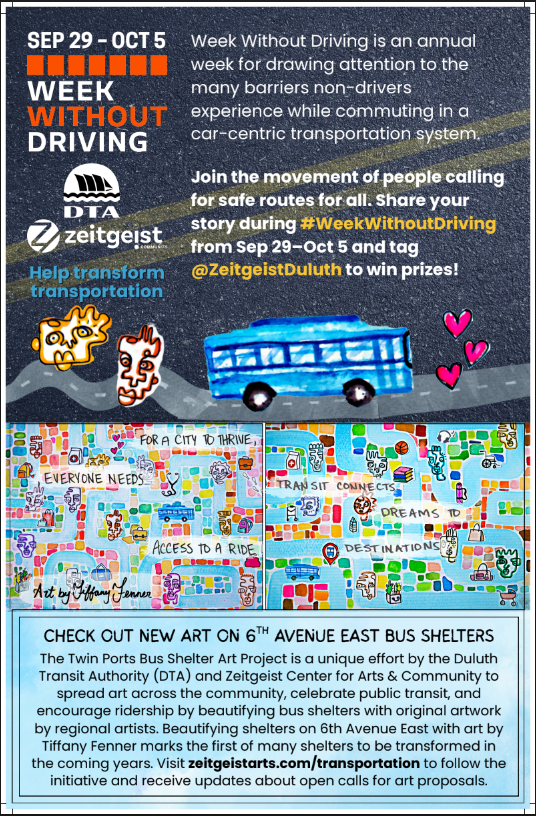DTA Teams up with Zeitgeist and local Artist to spread art across the community!
The Twin Ports Bus Shelter Art Project is a unique effort by the Duluth Transit Authority (DTA) and Zeitgeist Center for Arts & Community to spread art across the community, celebrate public transit, and encourage ridership by beautifying bus shelters with original artwork by regional artists. Launched in 2025, the Bus Shelter Art Project aims to continue installing artwork on shelters across the service area until all shelters have been transformed with art. Join the Zeitgeist mailing list to receive updates about open calls for art proposals and to follow the progress of the initiative. We invite all who believe in the positive impact of art in public spaces to support the project by sponsoring a bus shelter mural: email dclark@duluthtransit.com. For questions about the project, contact dclark@duluthtransit.com.
